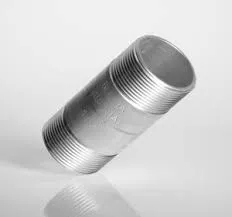-
Cangzhou Yulong Steel Co., Ltd.
-
Phone:
+86 13303177267 -
Email:
admin@ylsteelfittings.com
- English
- Arabic
- Italian
- Spanish
- Portuguese
- German
- kazakh
- Persian
- Greek
- French
- Russian
- Polish
- Thai
- Indonesian
- Vietnamese
- Zulu
- Korean
- Uzbek
- Hindi
- Serbian
- Malay
- Ukrainian
- Gujarati
- Haitian Creole
- hausa
- hawaiian
- Hebrew
- Miao
- Hungarian
- Icelandic
- igbo
- irish
- Japanese
- Javanese
- Kannada
- Khmer
- Rwandese
- Afrikaans
- Albanian
- Amharic
- Armenian
- Azerbaijani
- Basque
- Belarusian
- Bengali
- Bosnian
- Bulgarian
- Catalan
- Cebuano
- China
- China (Taiwan)
- Corsican
- Croatian
- Czech
- Danish
- Esperanto
- Estonian
- Finnish
- Frisian
- Galician
- Georgian
- Kurdish
- Kyrgyz
- Lao
- Latin
- Latvian
- Lithuanian
- Luxembourgish
- Macedonian
- Malgashi
- Malayalam
- Maltese
- Maori
- Marathi
- Mongolian
- Myanmar
- Nepali
- Norwegian
- Norwegian
- Occitan
- Pashto
- Dutch
- Punjabi
- Romanian
- Samoan
- Scottish Gaelic
- Sesotho
- Shona
- Sindhi
- Sinhala
- Slovak
- Slovenian
- Somali
- Sundanese
- Swahili
- Swedish
- Tagalog
- Tajik
- Tamil
- Tatar
- Telugu
- Turkish
- Turkmen
- Urdu
- Uighur
- Welsh
- Bantu
- Yiddish
- Yoruba

Nov . 02, 2024 23:13 Back to list
2g pipe weld
Understanding 2G Pipe Welding Techniques and Applications
Pipe welding is an essential process in various industries, particularly where the integrity and reliability of piping systems are critical. Among the different welding positions used in the industry, the 2G position—also known as the horizontal position—is commonly employed for welding pipes. This article delves into the techniques, advantages, and applications of 2G pipe welding.
Understanding 2G Pipe Welding Techniques and Applications
The 2G welding technique can be applied using various welding processes, including Shielded Metal Arc Welding (SMAW), Gas Tungsten Arc Welding (GTAW), and Gas Metal Arc Welding (GMAW). The choice of welding process depends on factors like material type, thickness, and the specific requirements of the project. For example, SMAW is often used for its versatility and effectiveness in outdoor conditions, while GTAW is preferred for its precision, making it suitable for applications requiring high-quality welds.
2g pipe weld

When executing a 2G weld, several crucial factors must be considered to ensure a successful joint. Proper joint preparation is vital, which includes cleaning the surfaces to remove contaminants such as rust, oil, and dirt. Ensuring adequate fit-up of the pipe sections is also essential. A good fit minimizes the risk of defects and allows for a more uniform heat distribution during welding.
Another critical aspect of 2G pipe welding is the selection of the appropriate filler material. The filler material should be compatible with the base metal to ensure a strong and durable joint. Additionally, welders must consider factors such as the welding parameters (current, voltage, travel speed, and electrode angle) to achieve optimal results. Adjusting these parameters helps in controlling the heat input, which is essential for preventing issues like distortion and excessive penetration.
Safety is paramount in any welding operation, and the 2G welding position is no exception. Welders must use appropriate personal protective equipment (PPE) including eye protection, gloves, and flame-resistant clothing. Adequate ventilation is also crucial to avoid the inhalation of harmful fumes that may be generated during the welding process.
In conclusion, 2G pipe welding plays a vital role in various sectors, including oil and gas, construction, and manufacturing. Its ability to provide strong, reliable joints makes it a preferred choice for many applications. By understanding the techniques and considerations involved in 2G pipe welding, welders can enhance their skills and contribute to the creation of safe and effective piping systems.
Latest news
-
ANSI 150P SS304 SO FLANGE
NewsFeb.14,2025
-
ASTM A333GR6 STEEL PIPE
NewsJan.20,2025
-
ANSI B16.5 WELDING NECK FLANGE
NewsJan.15,2026
-
ANSI B16.5 SLIP-ON FLANGE
NewsApr.19,2024
-
SABS 1123 FLANGE
NewsJan.15,2025
-
DIN86044 PLATE FLANGE
NewsApr.19,2024
-
DIN2527 BLIND FLANGE
NewsApr.12,2024
-
JIS B2311 Butt-Welding Fittings LR/SR 45°/90° /180°Seamless/Weld
NewsApr.23,2024











